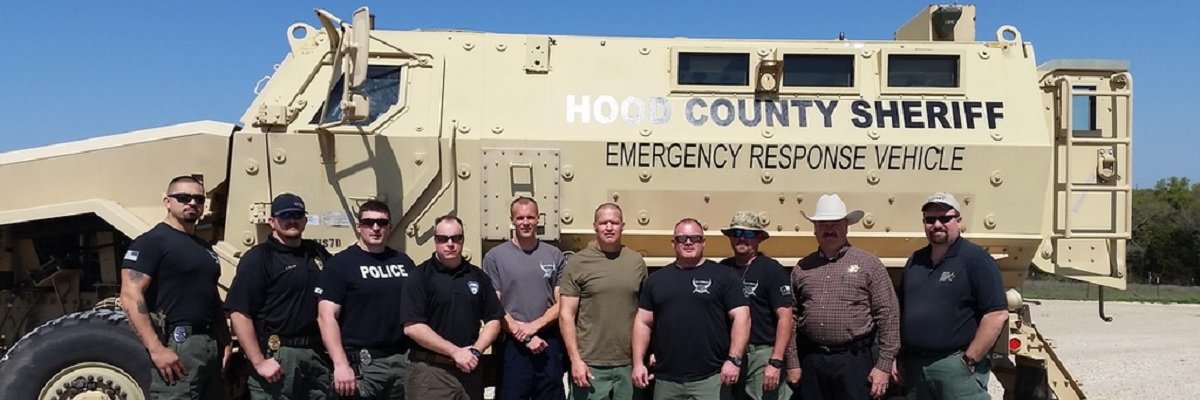It’s a reasonable expectation that if the Pentagon’s giving out 24-ton military vehicles to local police departments, those departments should be sufficiently trained in how to use it. But as the wide discrepancy in quality shown by docs released by the Texas Department of Public Safety shows, that’s not always be the case.
As we reported last month, the Defense Logistics Agency amended the 1033 program’s policies in the wake of Ferguson. Before receiving an MRAP, an agency must certify that it has some sort of training plan.
This policy has also applied retroactively, with LEAs nationwide submitting proof of training to their state coordinators for vehicles they’ve had for months, or in some cases, years.
MuckRock has begun a state-by-state audit of these training plans, and as the first sets of documents start to come in, some patterns have begun to emerge.
What even a cursory examination of the plans makes apparent is that there is little consistency between agencies, specifically in how much hard evidence of training they feel obligated to provide. Texas was one of the first states provide us with responsive documents, and the range of completely different forms of documentation makes it a perfect case study in how little the DLA’s amendment does to standardize the confirmation that police officers actually know how to operate their MRAPs.
On the one hand, there are police departments like Wichita Falls who provide a comprehensive lesson plan, some form of citation for the information given, a test-drive checklist, and sign-in sheet – probably the ideal model for training verification.
There are also a few Texas LEAs with fairly comprehensive training summaries whose plans notably appear to share boilerplate formatting, which would seem to suggest that someone, somewhere has made an attempt to standardize the process of the state’s training verification. However, out of the 90 plans sent to us, only five use this format.
Strangely, the closest the documents come to a constant is in their repeated citation of Paul D. Smith, of Smith Integrated Technologies – a private contractor and former Red River ‘MRAP University’ Instructor who has been hired by 165 police agencies across the country, including 38 in Texas - by far the most of any state. Many of Texas’ approved plans consist of a bullet-point list of basic topics they covered in their training session, apparently validated by a brief reference to Smith IT or Smith himself tacked to the bottom of the document.
One document even includes Smith’s resume, as well as an invoice for $1140.
But many others don’t provide even that level of corporate oversight, which leaves little more to go on than good faith that the subjects of each item listed were adequately covered by an instructor with unspecified qualifications – or who is often even unspecified themselves.
As more states’ training plans come in there will likely be more aspects of the DLA’s new training policy worth covering: for example, the responses we’ve received from Connecticut police departments so far have revealed a level of bureaucratic obscurity tied to whether a town has responsibility to document training for an MRAP they house for a regional Emergency Response team.
The issue of towns claiming that the new policy hasn’t been applied to them because they received their vehicle before it was in place has also come up, which may become an even more puzzling inconsistency as we receive more responses from State Coordinators. For now, though, you can take a look at the collection of tiny discrepancies between Texas’ 1033 training plans on the request page.
Image via Hood County Sheriff’s Office




